Just a suggestion but maybe save the atomics for the UK? As Germany I found the bombs useful for taking them out without invading them.
- 1
- 1
Interesting. I’ll look at that - including whether I have to invade them to rack up my twelve victory condition objective (the Allies currently sit on 13 out of their 15 after taking out Japan). But if I do want to attack them, I could try to leave one in the stockpile and accrue another one or two by the time it’s an issue. But if I find i need them to take down Germany and France before bleeding out, I’m afraid Berlin and Paris will be going up in smoke!Just a suggestion but maybe save the atomics for the UK? As Germany I found the bombs useful for taking them out without invading them.
'47 February, I think I'd wait for the airplanes to get upgraded, it can be the gamechanger during the initial assault but I don't know how long the upgrade would take.Thanks for reminding me about the jet engines - I’ll have to check on them again, as I recall that was one of the things I was waiting for before attacking the West. There’s the time to finish the research then for units to upgrade. Is it a big enough difference to delay any DoW until that is done?
So not a tough nut at all, given the AI.The Soviets have begun to close the noose on Kabul in their war against the last Axis power. But the Afghan capital, with its mountains and forts, will likely be a touch nut to crack, if defended properly.
So, aside from slow movement, really no nuts to crack at all, as expected.28 October
The third battle for Kabul was won by the Soviets at 2200hr (Soviets 199/16,993; Afghans 211/23,500 killed). But the difficult terrain and often poor weather meant the Afghan capital would not be occupied before the month ended.
I can't help but wonder if Soviet planning is a bit too optimistic. Seems like it would make more sense to plan on holding this line on what is really not hospitable terrain for any kind of offensive (and even if the line is breached, nothing of great importance is threatened), and to dedicate as many forces as possible to a key offensive thrust in Europe main.Archangelsk Theatre had 227,000 men available in three Army Groups (or Fronts in Soviet parlance) and their main task was to take the two isolated ports on the Norwegian border with Finland, which were heavily defended by the Norwegian Army.
Similar here. Any attack into Ostpreussen is likely to lead nowhere, but holding the line shouldn't be too impossible. On the other hand, the main thrust clearly needs to be through Poland which is weak and opens a superhighway to the rest of the West.The Baltic Theatre had a narrow front line assigned, but it faced the huge Germany Army massed on the border of Eastern Prussia. It had 532,000 men assigned to two Fronts and was tasked with taking Königsberg and Danzig. They were optimistic about the relative combat power on the border, but these objectives would surely prove difficult to take. But without taking German territory, it was believed nuking Berlin alone would not be enough to force a surrender.
A good looking OOB >> saving men.Sometimes fewer HQs also means saving on Manpower. Sometimes people forget that a nice looking OOB also takes up a lot of men.
The Commissariat approve of this message.A good looking OOB >> saving men.
I'll keep an eye on it. That would allow a few months of lead-up for new units to deploy, those upgrades to finish and the Middle East-Central Asian Theatre to shake out again after Afghanistan is wrapped up. Then again, Uncle Joe's finger may get itchy on that red button before then ...'47 February, I think I'd wait for the airplanes to get upgraded, it can be the gamechanger during the initial assault but I don't know how long the upgrade would take.
So not a tough nut at all, given the AI.
I guess it took a few battles, one of them quite decent, to win though nothing too demanding. Time and movement accounts for the rest of the delay.So, aside from slow movement, really no nuts to crack at all, as expected.
I can't help but wonder if Soviet planning is a bit too optimistic. Seems like it would make more sense to plan on holding this line on what is really not hospitable terrain for any kind of offensive (and even if the line is breached, nothing of great importance is threatened), and to dedicate as many forces as possible to a key offensive thrust in Europe main.
This could be the case. Those broad objectives for now are more designed to ensure formation get into/stay in position in the lead-up to a DoW. Before then, the command chain, level of AI delegation and subordinate objectives will need to be refined.Similar here. Any attack into Ostpreussen is likely to lead nowhere, but holding the line shouldn't be too impossible. On the other hand, the main thrust clearly needs to be through Poland which is weak and opens a superhighway to the rest of the West.
They could well be optimistic, but we shall see. When it comes, one suspects the effusion of blood will be considerable!One hopes those frontline commanders are accurately reporting their enthusiasm, and not just trying to make things look overly optimistic. If they lie, I hope they are as enthustiastic to offer restitution to the People of the Soviet Union with a minimum of red tape (though a little crimson spatter may be unavoidable, one hopes they at least ensure to avoid messing with the maps).
The last front does look a mite ungainly.
Maybe, will see what's on offer when I get down to the more detailed arrangements. Basically, at the moment the OOB there will be whatever the AI had when it was in control of the Soviets when I was playing France, the one broad theatre rationalisation I did early on when taking over, plus ad hoc unit additions that have come since from production. However, I'm not planning to go overboard in changing it all too much - otherwise it wouldn't be quick and dirty!It could be that having multiple Army Group commands for Hungary and Romania might be a good idea, and having multiple theater and associated chains would be redundant. Could be that's the better option for sure.
And less confusion, though sometimes less commander coverage once units spread out. At least the USSR doesn't need to worry about manpower (oh how I wish they could transfer a cool half million men of so over to the UGNR in Talking Turkey!)Sometimes fewer HQs also means saving on Manpower. Sometimes people forget that a nice looking OOB also takes up a lot of men.
A good looking OOB >> saving men.
Per above, I'm not going to do too much tweaking of the command chains on the Western Front: there's just too much of it and it won't be a micro-managed affair. The vibe is going to be largely as it was in the Far East, but on a larger scale: leave it all up to Army or maybe Army Group commanders to handle it all (and stuff it up), while I tweak objectives and sometimes switch formations from one command to another if necessary.@Surt speaks true, because quite honestly, the thing that bothered me the most about my playthrough in my AAR towards the end was that everything moved too well towards exact application of perfection: a perfect OOB of exactly five divisions per corps and five corps per army... Reading around, some corps were just two divisions, others four, and almost never five.
I think it is almost done, with that being the double-edged sword, as you note (re lend lease, wartime economy etc). I reckon we will probably be overwhelmed, with too many fronts to defend and without the boost of ground and armed forces I was pinning my hopes on in Asia from Japan and Manchuria, plus now having to fight China as well. Let alone all those modern Western forces, including the Germans (again, this time with powerful Allies to back them up).One would almost hope that the Afghan war becomes the quagmire it was historically, if only for the sake of holding on to US Lend Lease and Wartime economic laws for as long as possible until WW3 starts. In any case, it really does look like this Soviet Union will be the definite underdog in a war with the expanded Allied nations. It will be a challenging war, and with AI control, victory may not be guaranteed. Of course, with nukes, you might tip the balance, though it's questionable for how long the USSR will maintain the lead in Nuclear weapons technology once the Brits and the Americans start collaborating on a rapid nuclear research and armament programme. Of course, if you de enough damage upfront, such a programme may not get off the ground at all. In any case, there's exciting stuff in the pipeline.
Common sense: highly over-rated and in most cases counter-revolutionary and treasonous!Unlike the slow progress through Afghanistan, which they very much do not approve of. Too many people making excuses about distance, terrain, logistics or common sense. These things did not matter to Marx so they should not matter to our generals. They must show some true Soviet stakhanovite spirit and make faster progress. There is always 9mm motivation should they continue to fail.

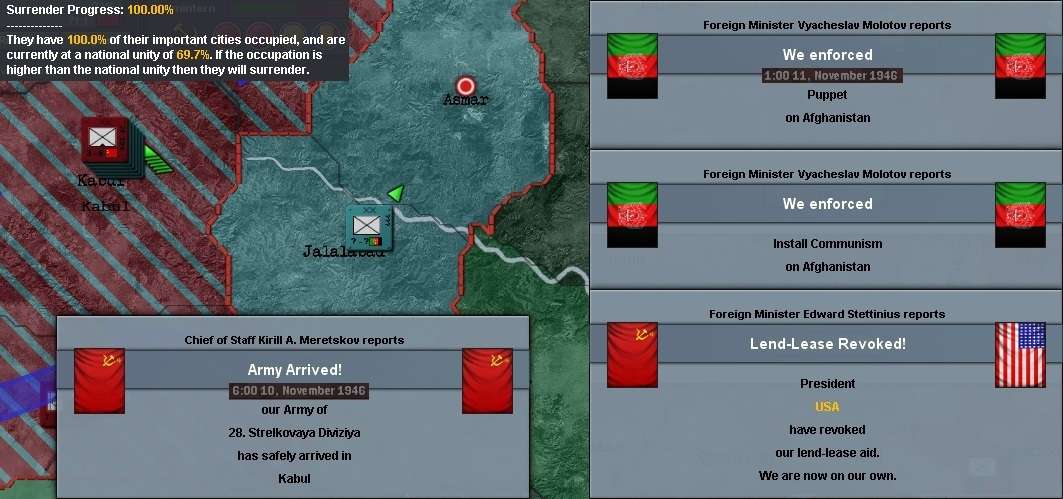
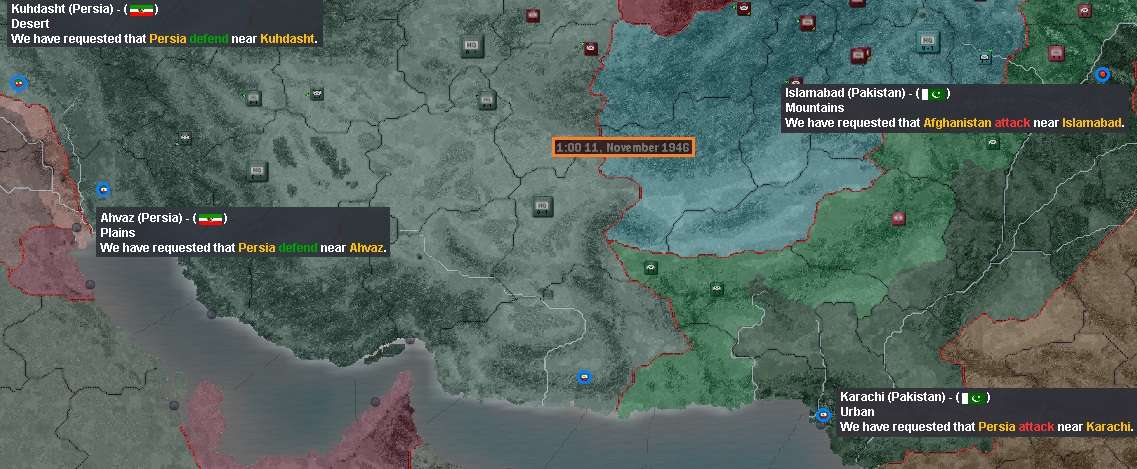
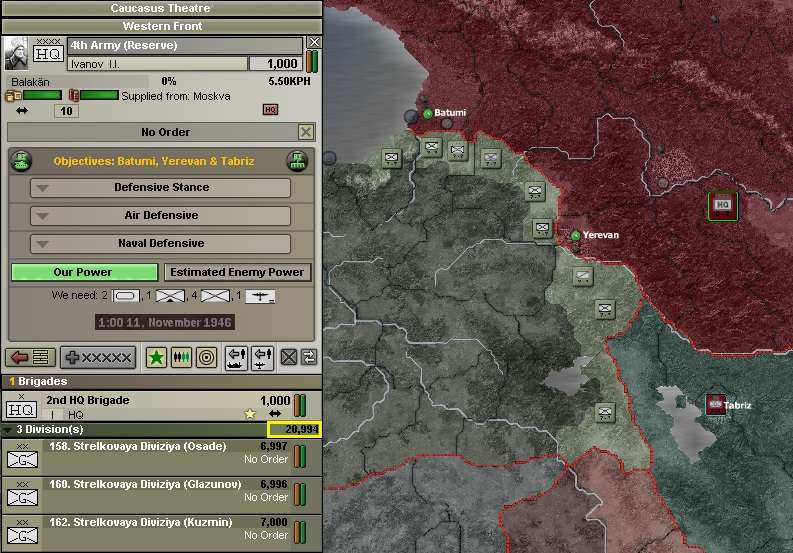
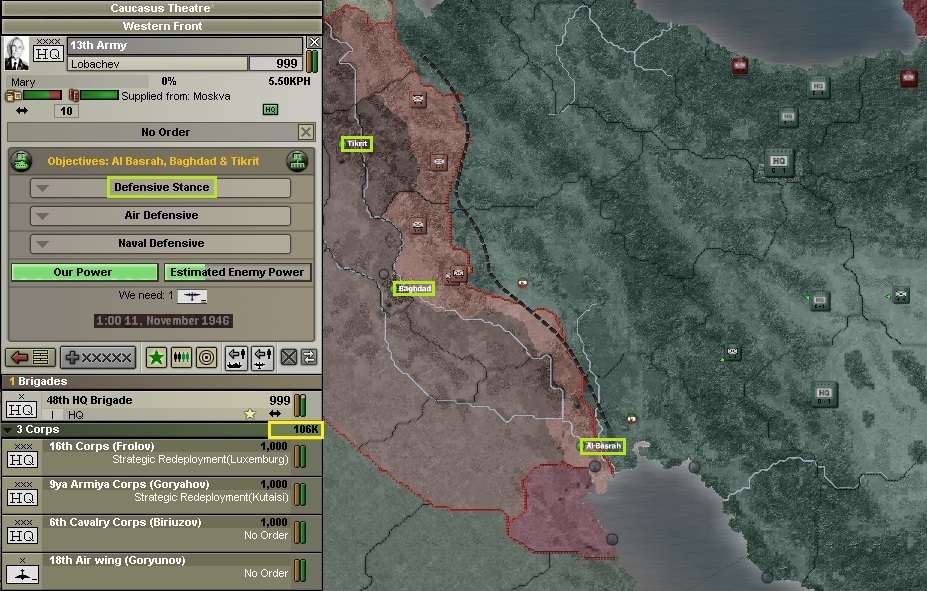
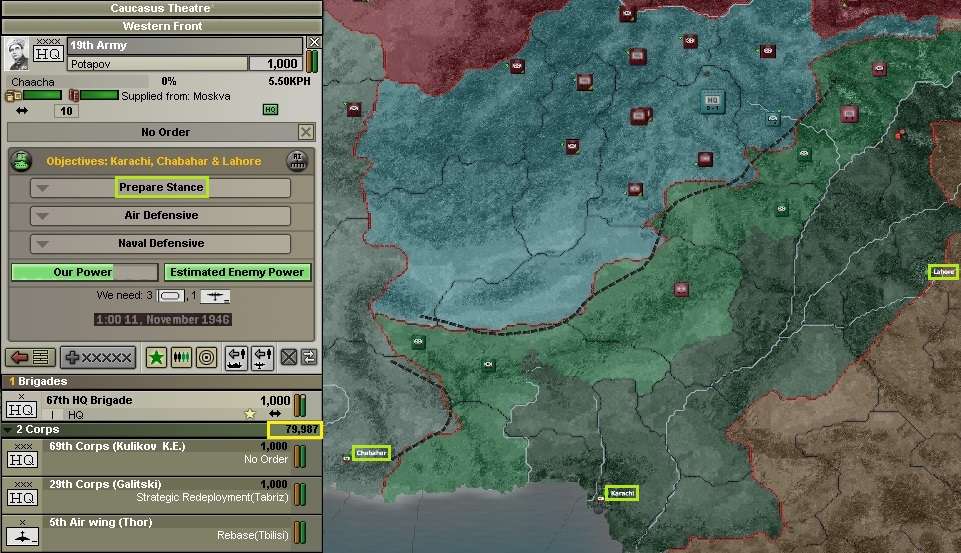

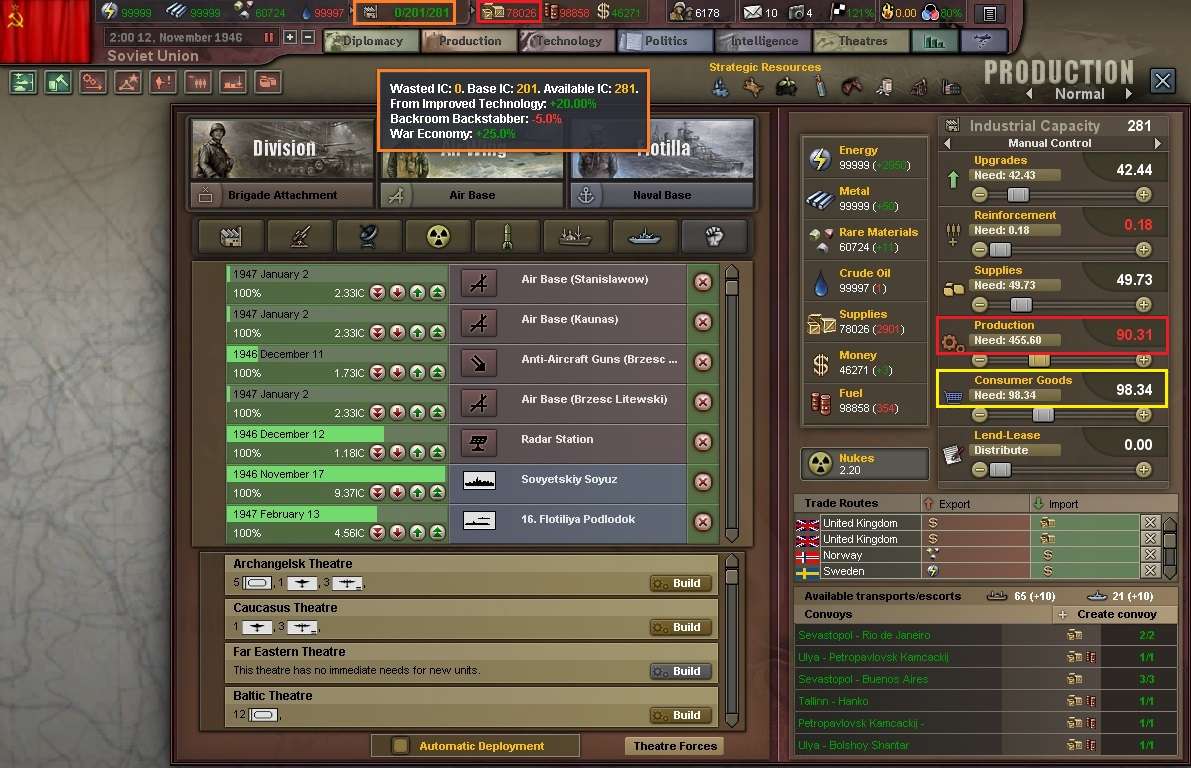
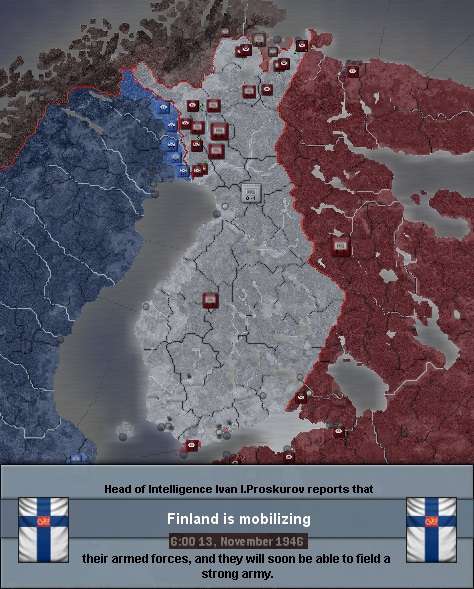


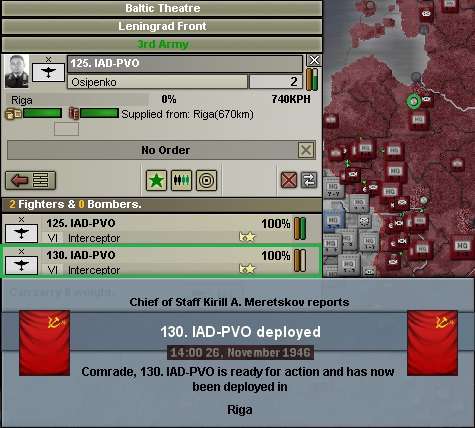

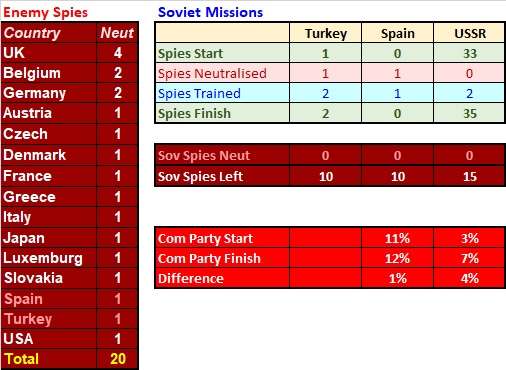
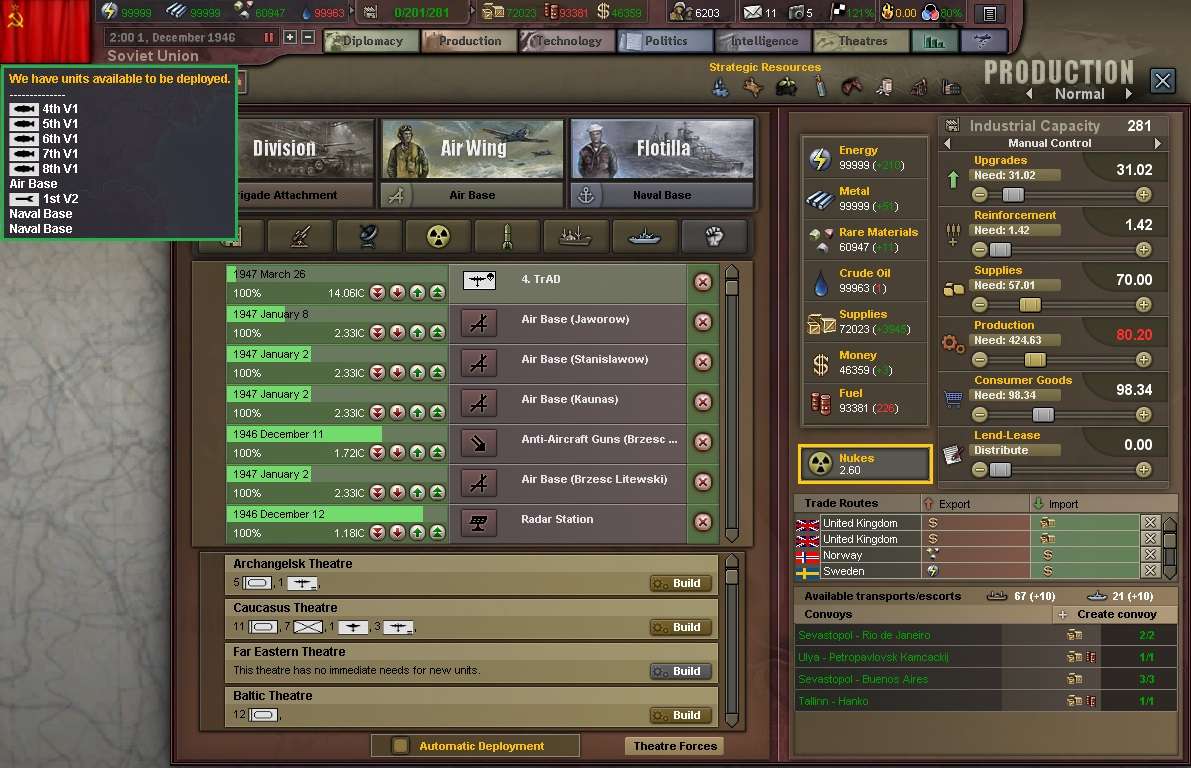
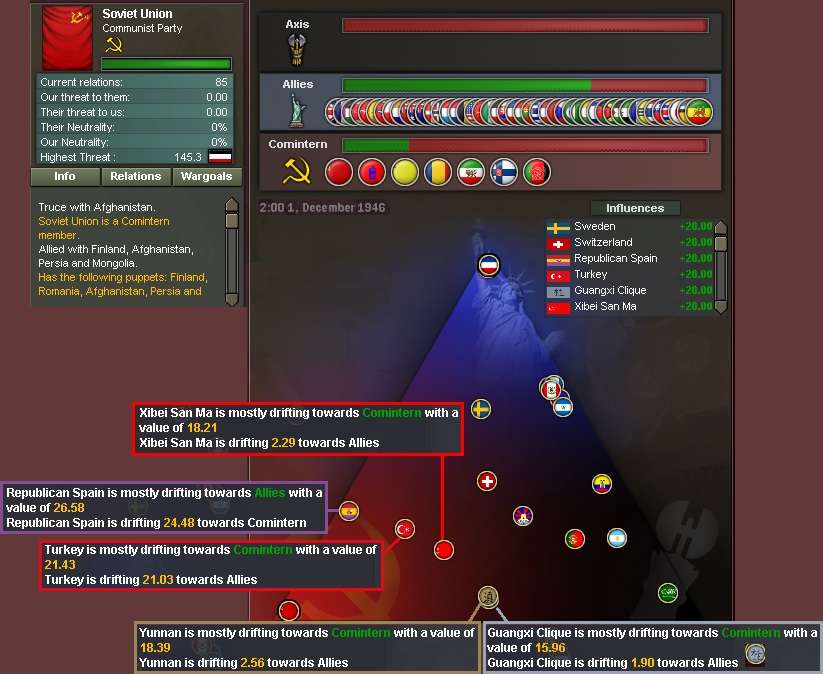

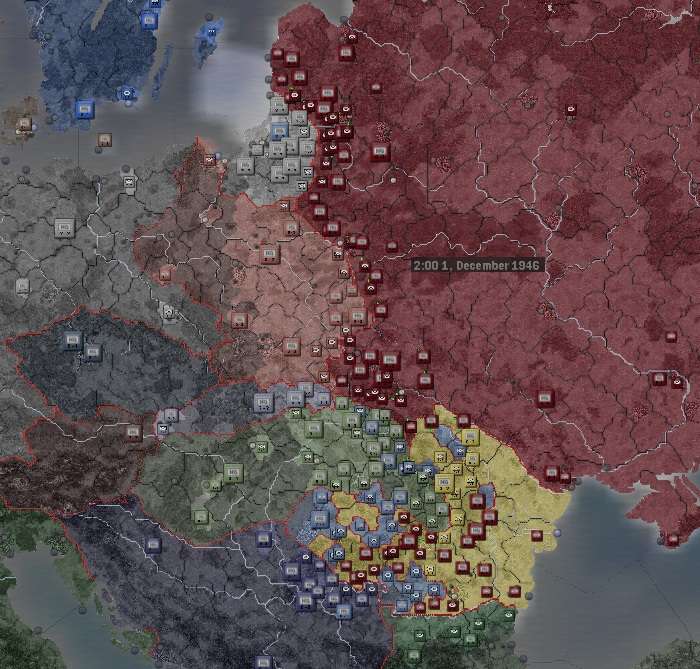

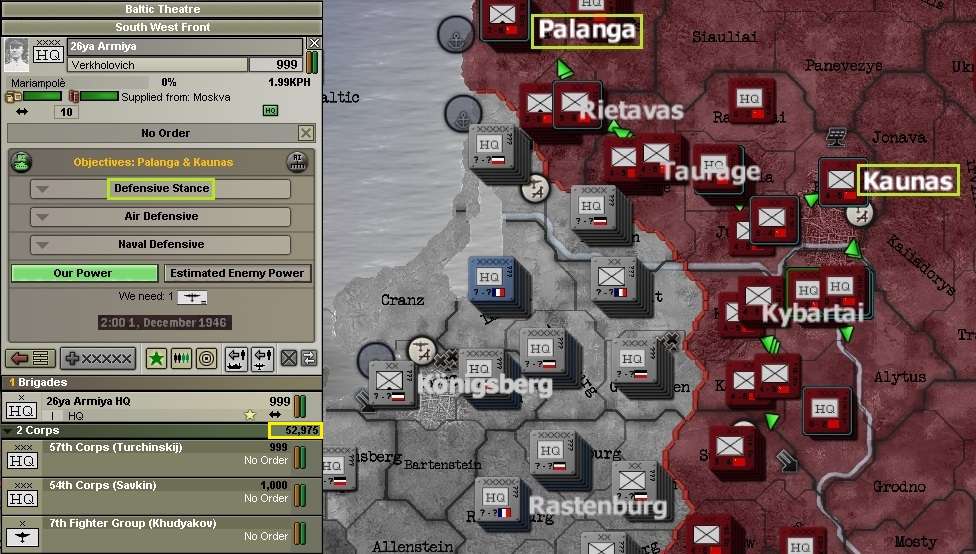



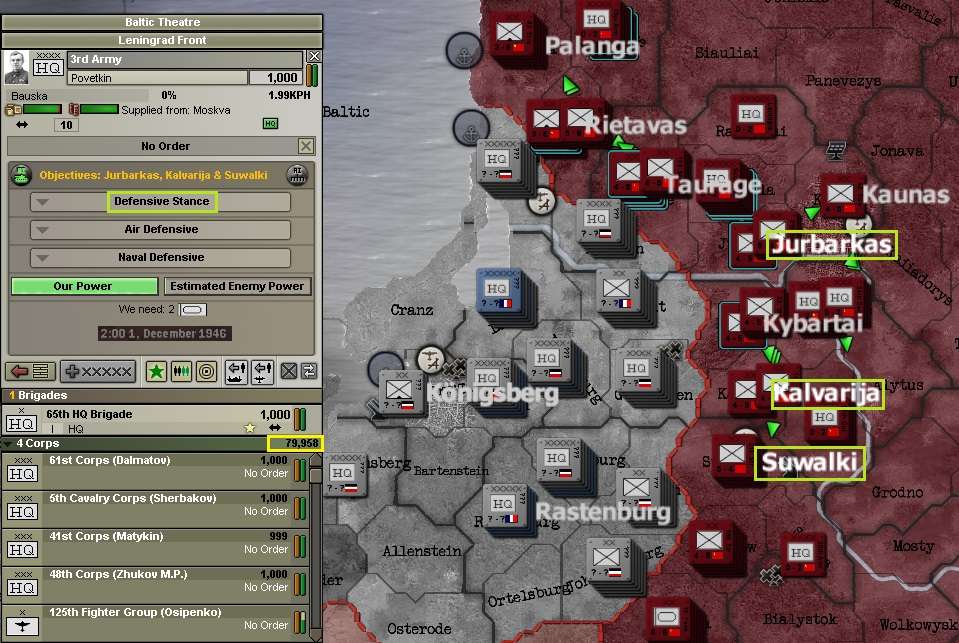

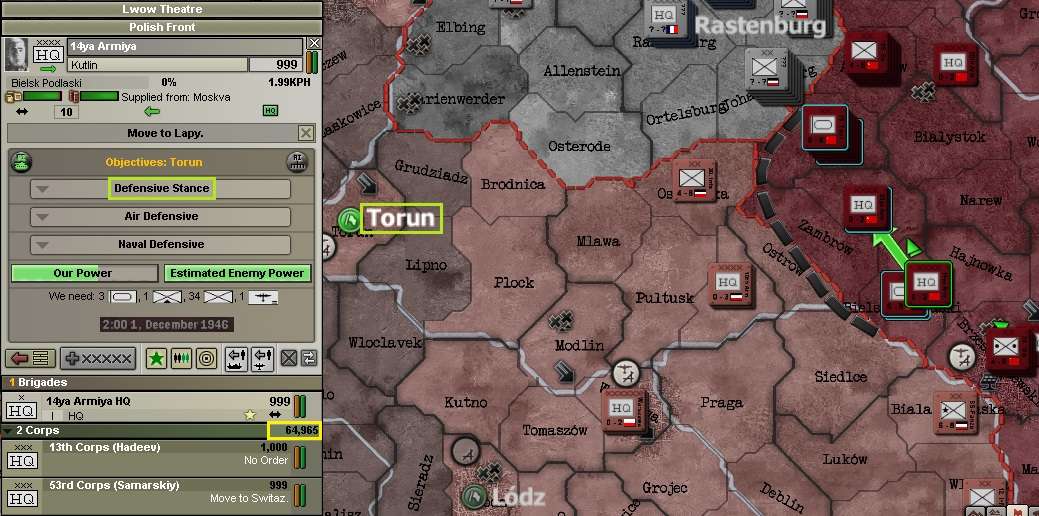
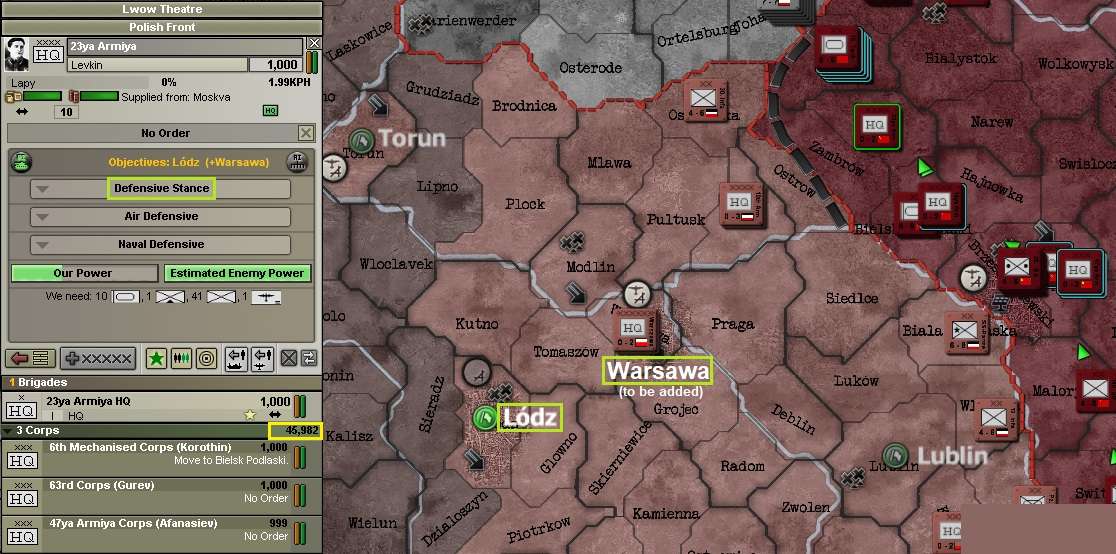
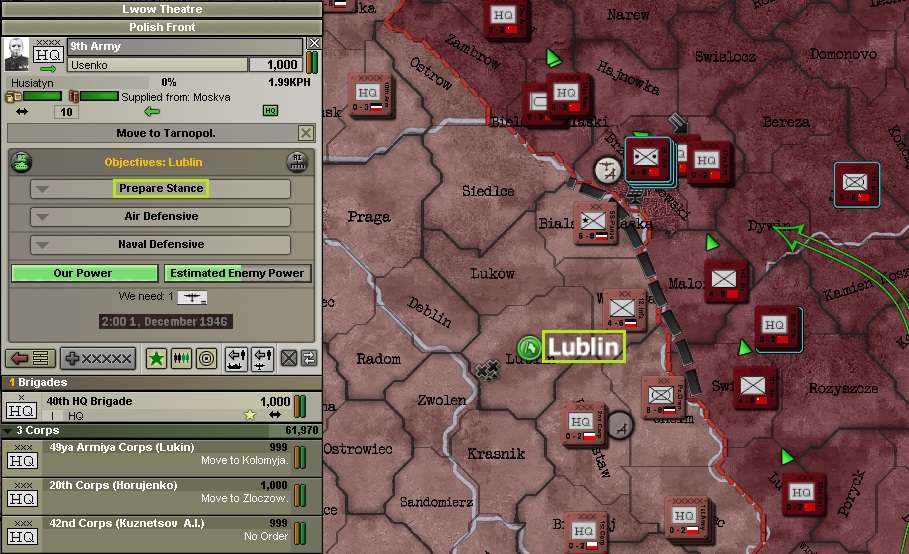
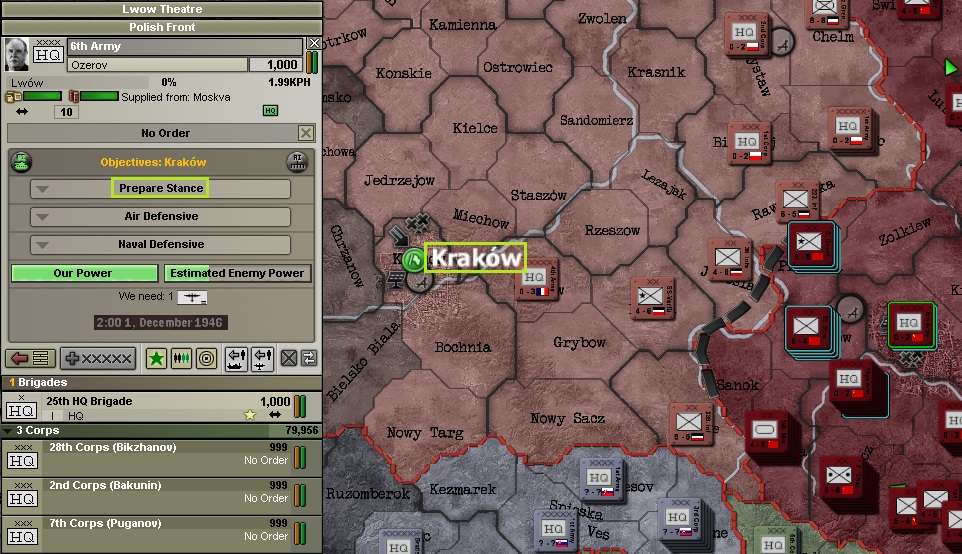

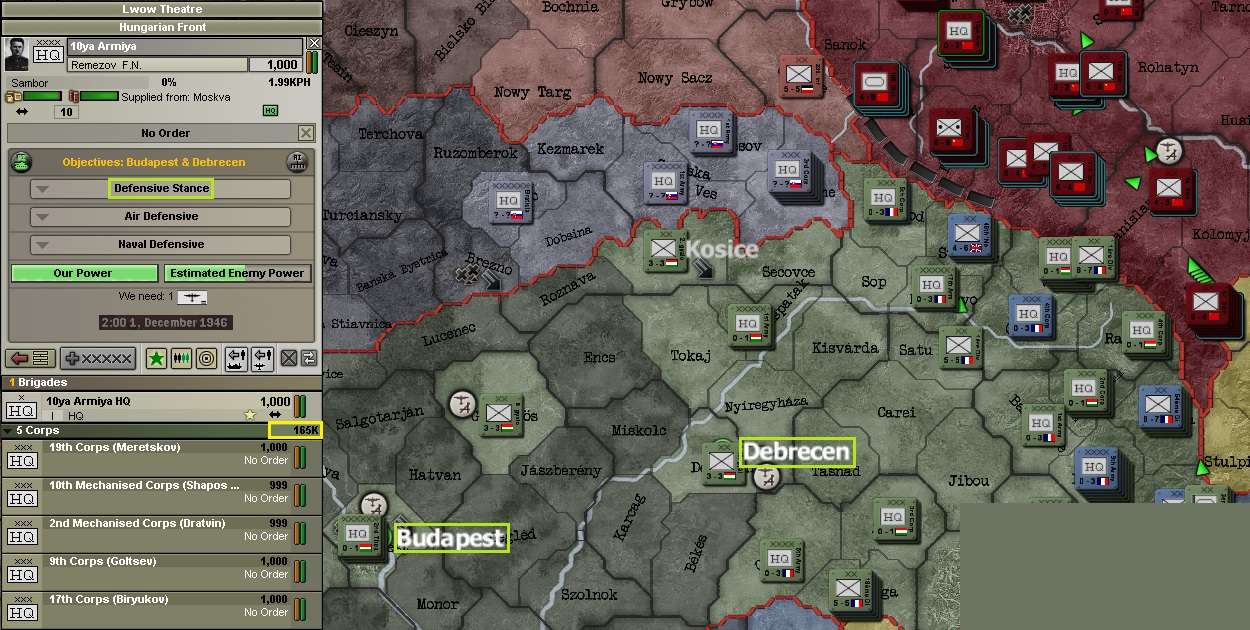
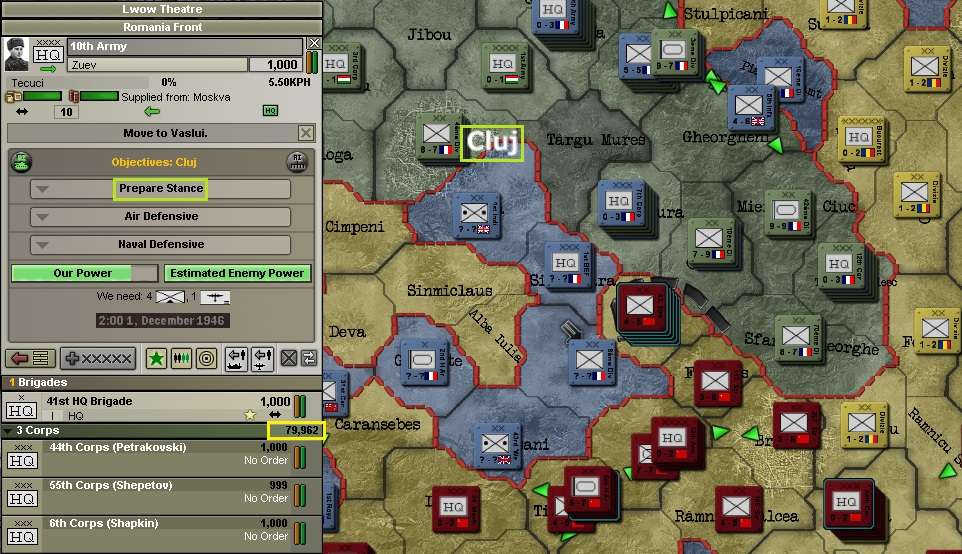

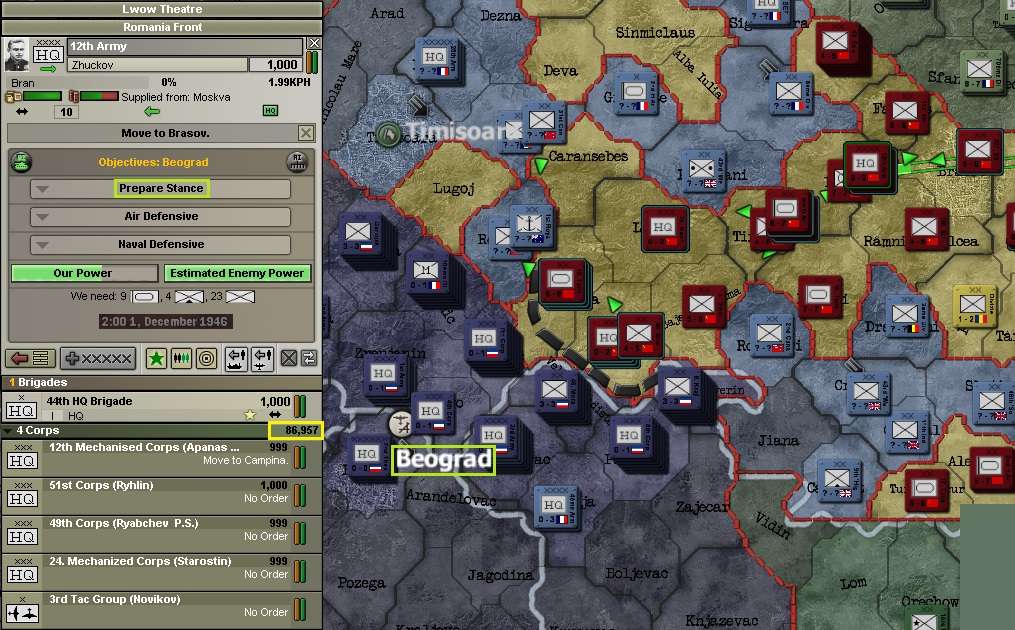
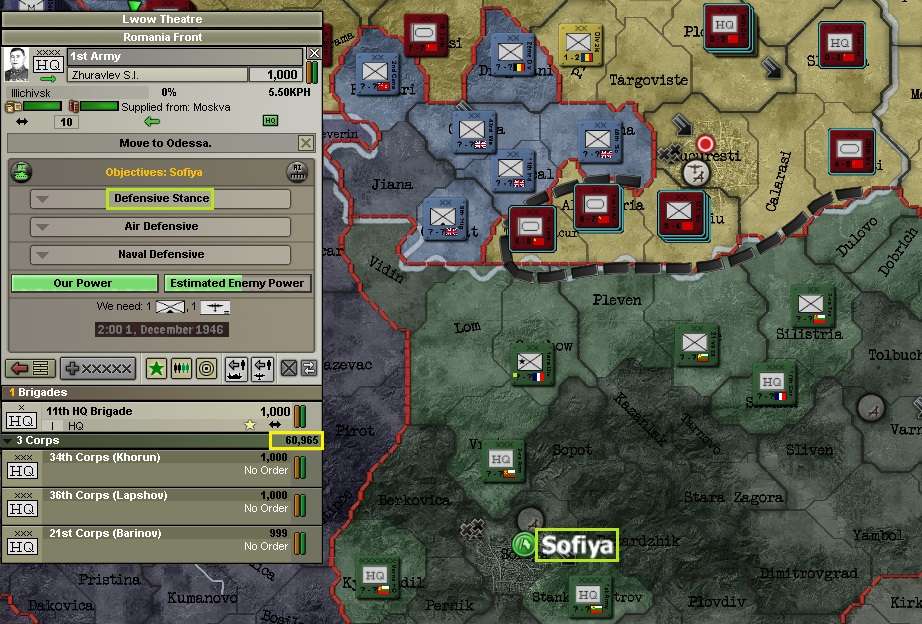
Post-War Industry
The end of the war brought a legal changes, the main effects of which were to reduce production capacity (on top of the loss of Lend-Lease), recruiting (the latter not a great worry, given the massive trained manpower surplus) and officer training (more of a detriment).

Do you doubt the collective comrade? The puny capitalist and proto-fascist feudalists will be wiped from the map in no time.it's gonna be difficult man, it's gonna be really difficult
my resolution is steel with regards to our red army and our comrades in arms, but I have zero confidence in the generals, unfortunately!Do you doubt the collective comrade? The puny capitalist and proto-fascist feudalists will be wiped from the map in no time.
Any propaganda that suggest the USA could be a threat is capitalist misinformation, do you doubt it comrade? if so comrade Beria has an offer for you!
